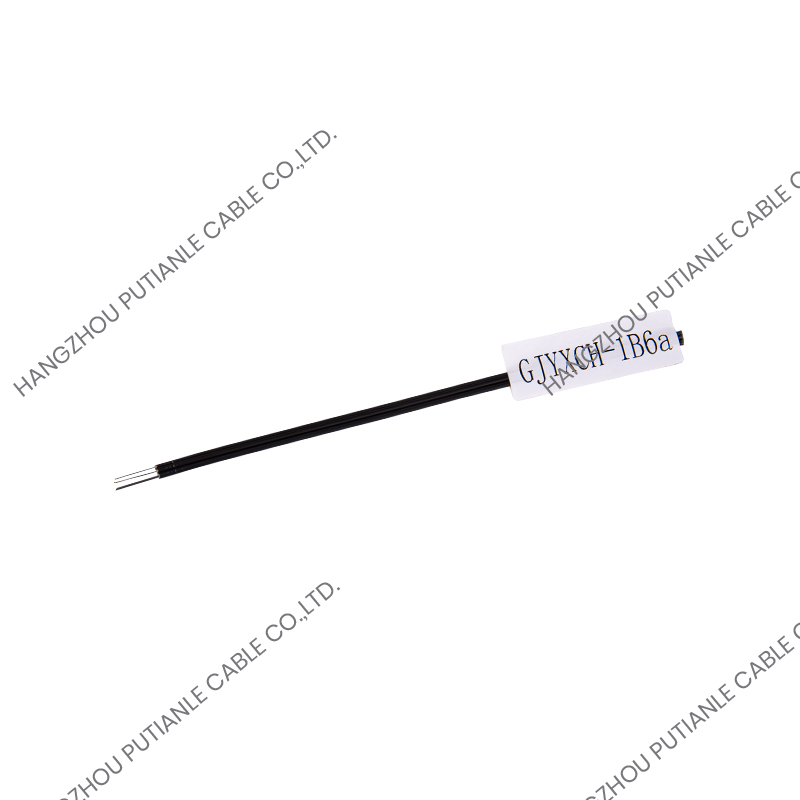With the rapid development of global information technology, fiber optic cables have become an important part of modern communication networks. They not only support basic services such as the Internet, television and telephone, but also provide a solid foundation for emerging technologies such as smart cities, the Internet of Things (IoT), and data centers. The high transmission speed and extremely low signal attenuation of fiber optic cables make them an irreplaceable key element in modern communication systems.
Fiber optic cables are cables that use optical signals to transmit data. They are composed of one or more glass or plastic optical fibers. Through the principle of total reflection of light, optical signals can be transmitted without loss in the optical fiber. The core part of the optical fiber is used to transmit optical signals, while the coating surrounding the core helps to maintain the propagation path of the optical signal. Compared with traditional copper wire cables, fiber optic cables can provide higher bandwidth, longer transmission distances and stronger anti-interference capabilities.
Fiber optic cables are mainly divided into two categories: single-mode optical fiber and multimode optical fiber.
Single-mode optical fiber has only one light propagation mode and is suitable for long-distance transmission. Its core diameter is small, usually 8 to 10 microns, and can transmit optical signals with longer wavelengths. Single-mode optical fiber is often used for long-distance communication, intercontinental communication and connections between data centers.

Multimode fiber has a larger core, usually 50 to 100 microns, allowing multiple optical signal paths to propagate simultaneously. This makes it suitable for shorter distance communications, commonly seen in local networks, data center internal connections, and transmission between buildings.
Fiber optic cables are widely used in the following areas:
Fiber optic cables are the core of modern communication networks, especially in long-distance telephone, Internet, and television signal transmission. It can provide high-speed, stable network connections to meet users' growing data needs. Whether it is the city's fiber-to-the-home (FTTH) network or the world's submarine optical cables, fiber optic cables play an important role.
With the rise of cloud computing and big data technologies, data centers have an increasing demand for high-speed, low-latency connections. Fiber optic cables, with their excellent transmission performance, have become an ideal choice for connections within and between data centers. Through fiber optic cables, data centers can efficiently process large amounts of data and realize real-time data exchange and storage.
In the construction of smart cities, fiber optic cables provide high-speed and stable connections for various devices. Data collection, transmission, and processing of IoT devices and sensors all rely on the support of fiber optic cables to ensure the intelligence and efficiency of urban management and services.
Fiber optic cables also have important applications in the medical industry, such as for the transmission of medical images and the connection of remote medical equipment. Due to its anti-electromagnetic interference characteristics, fiber optic cables are also widely used in the military field to ensure the security and reliability of communications.
The transmission speed of fiber optic cables far exceeds that of traditional copper cables, and can support data transmission with a larger bandwidth. With the continuous increase in Internet data traffic, high-speed fiber optic transmission has become an inevitable choice to cope with the growth in demand.
Due to the low attenuation characteristics of fiber optic cables, it is able to transmit optical signals over longer distances without the need for relay amplifiers. This makes fiber optic cables an ideal choice for long-distance communications, especially in cross-border communications and submarine optical cables.
Since fiber optic cables do not rely on current transmission, they are not affected by electromagnetic interference, can effectively avoid signal attenuation and noise interference, and ensure the stability and security of data transmission.
Compared with traditional copper cables, fiber optic cables are lighter, do not contain harmful metals, and have a lower environmental burden. With the increase in environmental awareness, fiber optic cables have become the representative of green communications.
With the development of emerging technologies such as 5G networks, the Internet of Things, and artificial intelligence, the demand for fiber optic cables will continue to grow. Especially in the context of a sharp increase in data transmission, fiber optic cables will become the core infrastructure of the information highway. In addition, with the continuous innovation of optical fiber technology, future optical fiber cables will be further improved in terms of transmission distance, bandwidth, speed, etc. to meet the growing global data demand.
With its unique advantages, optical fiber cables have and will continue to occupy an important position in the field of global communications and information technology. With the continuous advancement of technology, optical fiber cables will surely lead the revolution of future communication networks and lay a more solid foundation for the global digital and intelligent future.


 中文简体
中文简体 English
English Español
Español














